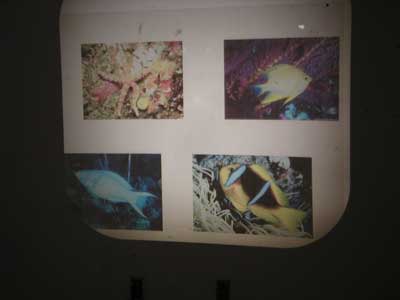
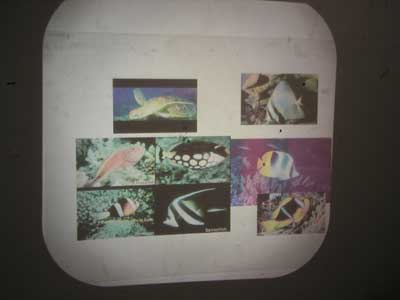
~Lesson 4~
Underwater Adventure: Exploring the Texture & Color of Ocean Creatures
 |
 |
LESSON
RATIONALE:
Students will think about how animals live in the world around them. It is important
for kids to know that animals are a part of their community too. They will be
working on their drawing skills, and will be working with a variety of objects.
Fish will be the main animal we look at, because I will be using Wyland’s
murals as an example to relate back to public art, and I can also get the kids
to start thinking about landscapes that will tie into the next lesson.
GOALS AND STANDARDS:
9.1.3 A- Recognize, know, use and demonstrate a variety of appropriate arts
elements and principles to produce, review and revise original works of art.
9.1.3 H- handle materials, equipment and tools safely at workspaces.
LEARNER OUTCOMES:
* Students will learn about how fish form communities
* Students will learn and think about the environment and conditions fish live
in.
* Students will create their own fish drawings after looking at the mural work
by Wyland, which they will then emphasize using a variety of materials. Their
drawings will be done on poster board, and will be used as a backdrop for story
telling with their foam fish.
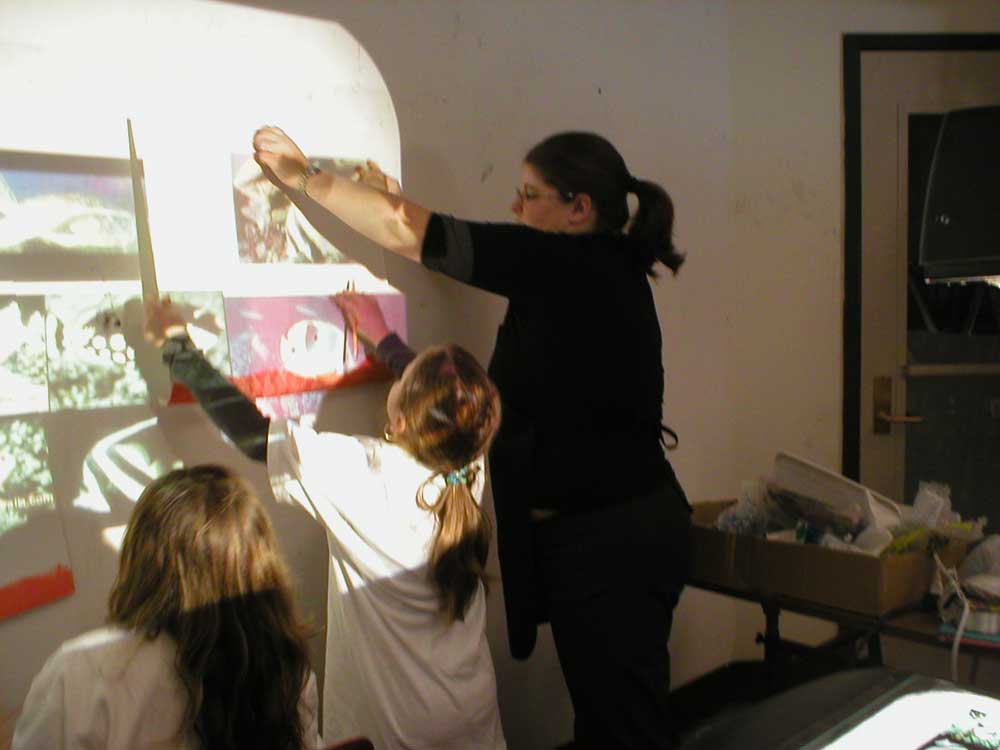 |
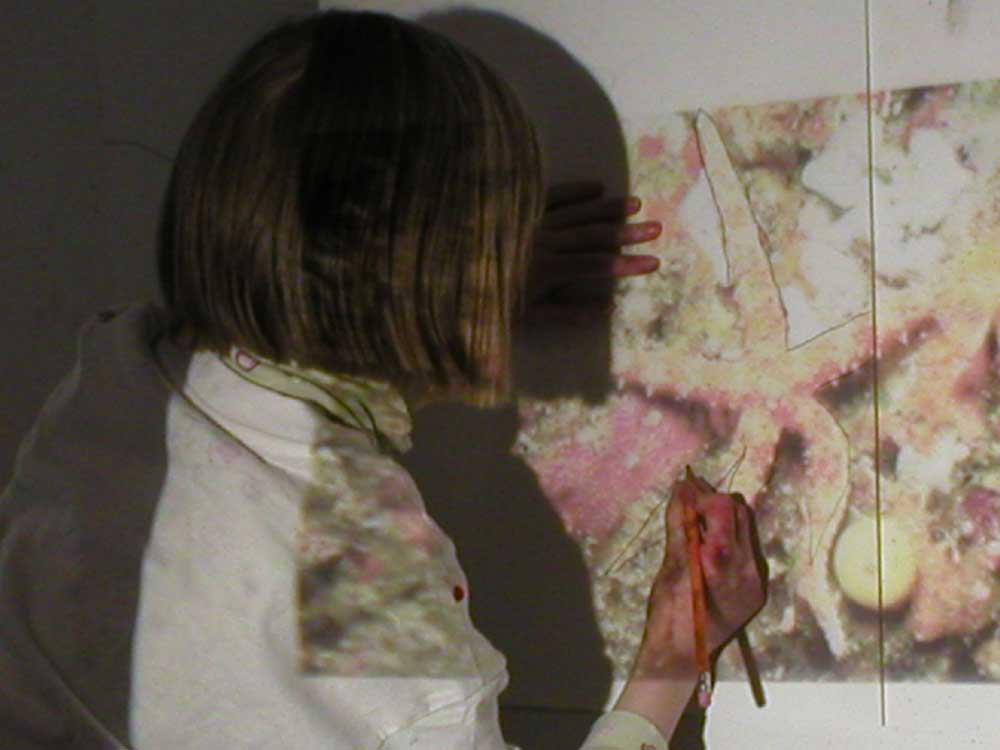 |
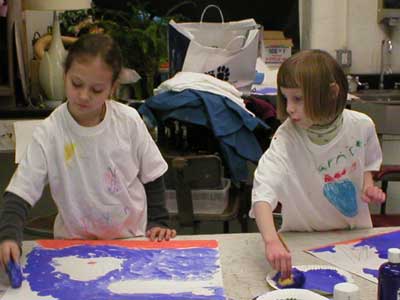 |
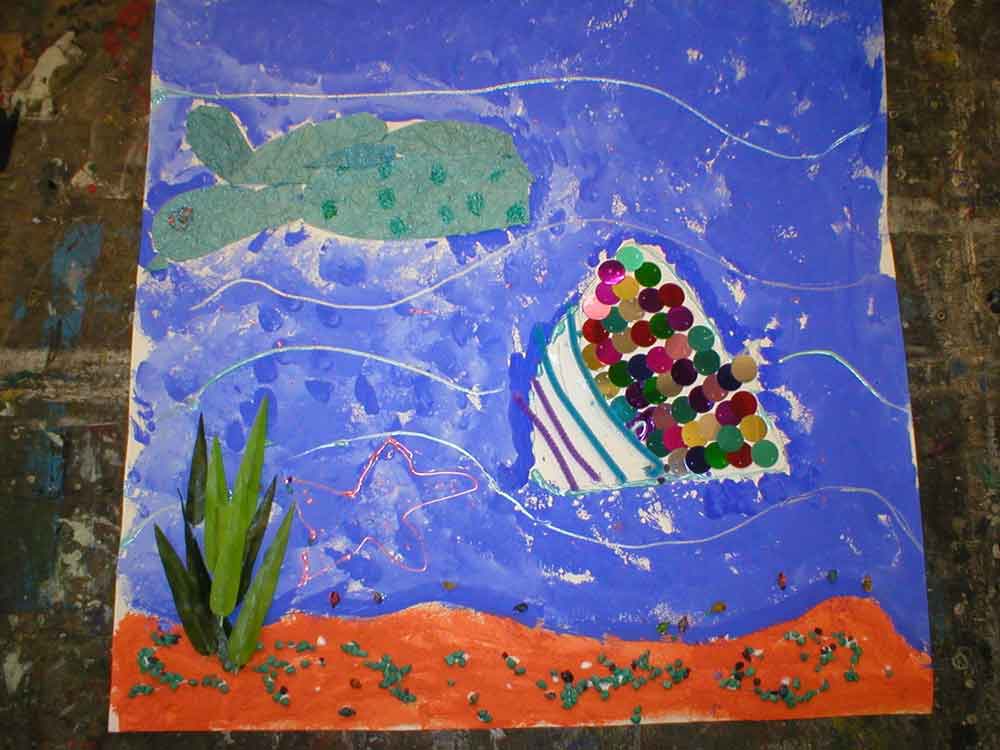 |
* Students will produce their own foam fish that will go into the city.
* If time allows students will create a story using their foam fish, they will
create a puppet like show that will be done over their fish drawings
MATERIALS NEEDED FOR LESSON:
A. Teacher Materials
-Digital camera (for documenting)
-Video camera (for documenting)
-Examples of projects
- Photos of fish in their environment, and examples of Wyland’s work
B. Student materials
-Poster board
-Pencils
- Tissue paper/ foil
-Beads, buttons,
-Foam
-Markers, colored pencils and crayons
- Scissors
- CD’s
-String
-Popsicle sticks
LESSON PROCEDURES:
A. Starting the Lesson:
Students will enter the classroom and work in their sketchbooks until the whole
class has arrived. Discussion and questions about their favorite animals will
be brought up. How do animals act like us? Where can animals live that we can’t?
B. Organizer
Students will sit on the carpet and look at pictures of murals by Wyland and
of a variety of fish. They will be shown how even animals participate in communities.
Then I will project pictures of fish onto the wall, and they will create their
own little mural, by placing their paper on the wall and drawing fish and ocean
elements.
The lights will be turned out, and the sea creatures will be projected on the
wall, and will be larger than life size, so the kids will hopefully get a glimpse
of what it might be like to live underwater.
C.
Lesson Sequence
Time/Teacher Teacher Action Student Action
9:00-9:10 am Distribute sketchbooks and tee shirts and encourage students to
work on either one. Talk about last week’s lesson on public art and how
they can use that knowledge on their tee shirts and sketchbooks. Students will
work in sketchbooks and on tee shirts.
9:10-9:40 The teacher will gather the students on the carpet square and start
talking to them about animals and more specifically fish. The teacher will briefly
show examples of murals and books as well as talk to them about how animals
create communities. Students will listen to the teacher’s explanations
and participate in discussion about fish. They will use their poster board to
create their own mini mural.
9:40-10:00 After they are done sketching, the teacher will show the students
how to finish their murals, by adding different materials to them that will
give them more color and texture. After they are done sketching, students will
finish their murals, by adding different materials to them that will give them
more color and texture.
10:00-10:10 Teacher will distribute a snack and encourage students to talk about
what they did while they eat it. They will talk about how they could be the
backdrop to a story, and then will talk about creating a main character for
a story. Students will eat a snack and participate in a discussion about their
pieces.
10:10-10:45 Teacher will distribute materials for students to make their foam
fish. Students will create their fish, and start to think of a story they can
act out either alone or together.
10:45-11:00 Teacher will line up students mini murals and allow students to
hang their fish over the murals and tell a story. Students will make up a story.
Using their fish to communicate their ideas.
A. Closure of Lesson
This lesson will close with the children using their fish to tell stories about
the fish and how it lives in its environment. I will question students about
the differences in a fishes environment vs. and human environment.
B.
Transition to Next Lesson
This lesson on animals and community will bridge to the next lesson on landscapes,
because it will get kids thinking about surroundings and how it impacts the
way of life for a fish, and hopefully get them thinking about the environment
that fish live in and how it is different than their own. This will lead to
the next lesson where they will be examining the environment that they live
in.
II.
ASSESSMENT OF STUDENT LEARNING
Students will discuss how fish can work together, and how they interact. They
will learn about the process of murals and look at examples from artists as
well as reference books to explore the idea of community. Students will be evaluated
on how they participate in the discussion and how they work in groups and by
themselves to complete the studio part of the lesson.
III.
EVALUATION OF LESSON AND LEARNING ACTIVITIES
While all of the activities raise questions and exploration and environment.
Students will be encouraged to relate all of the information and projects to
their own lives and interests. Based on their discussion along with how they
complete their work, and how they tell their stories at the end.
IV. REFERENCES
Murals by Wyland
Coral fish / Linda Pitkin
Hello, fish : visiting the coral reef / by Sylvia A. Earle
 |
 |
 |
 |